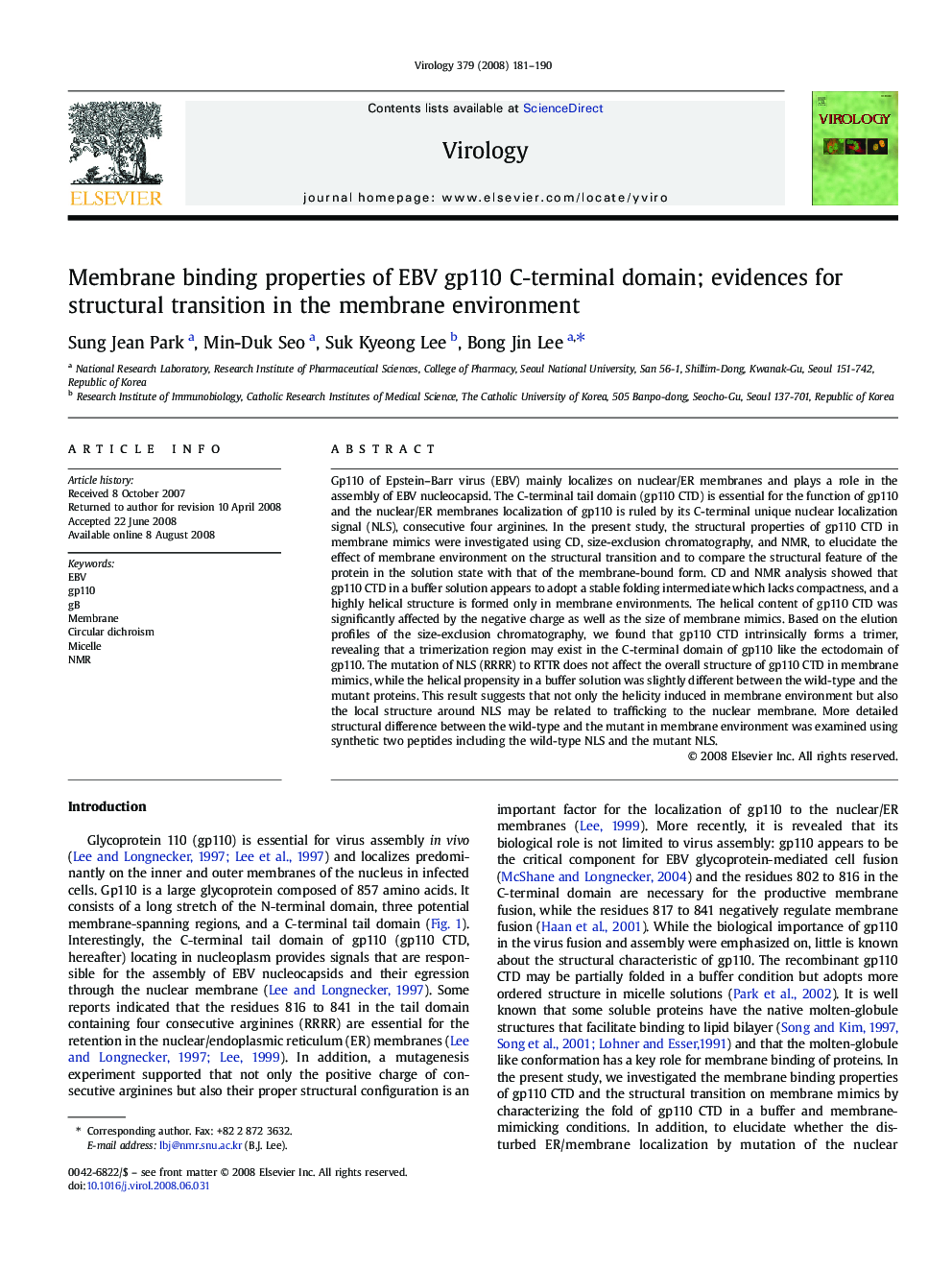| Article ID | Journal | Published Year | Pages | File Type |
|---|---|---|---|---|
| 3426205 | Virology | 2008 | 10 Pages |
Gp110 of Epstein–Barr virus (EBV) mainly localizes on nuclear/ER membranes and plays a role in the assembly of EBV nucleocapsid. The C-terminal tail domain (gp110 CTD) is essential for the function of gp110 and the nuclear/ER membranes localization of gp110 is ruled by its C-terminal unique nuclear localization signal (NLS), consecutive four arginines. In the present study, the structural properties of gp110 CTD in membrane mimics were investigated using CD, size-exclusion chromatography, and NMR, to elucidate the effect of membrane environment on the structural transition and to compare the structural feature of the protein in the solution state with that of the membrane-bound form. CD and NMR analysis showed that gp110 CTD in a buffer solution appears to adopt a stable folding intermediate which lacks compactness, and a highly helical structure is formed only in membrane environments. The helical content of gp110 CTD was significantly affected by the negative charge as well as the size of membrane mimics. Based on the elution profiles of the size-exclusion chromatography, we found that gp110 CTD intrinsically forms a trimer, revealing that a trimerization region may exist in the C-terminal domain of gp110 like the ectodomain of gp110. The mutation of NLS (RRRR) to RTTR does not affect the overall structure of gp110 CTD in membrane mimics, while the helical propensity in a buffer solution was slightly different between the wild-type and the mutant proteins. This result suggests that not only the helicity induced in membrane environment but also the local structure around NLS may be related to trafficking to the nuclear membrane. More detailed structural difference between the wild-type and the mutant in membrane environment was examined using synthetic two peptides including the wild-type NLS and the mutant NLS.
